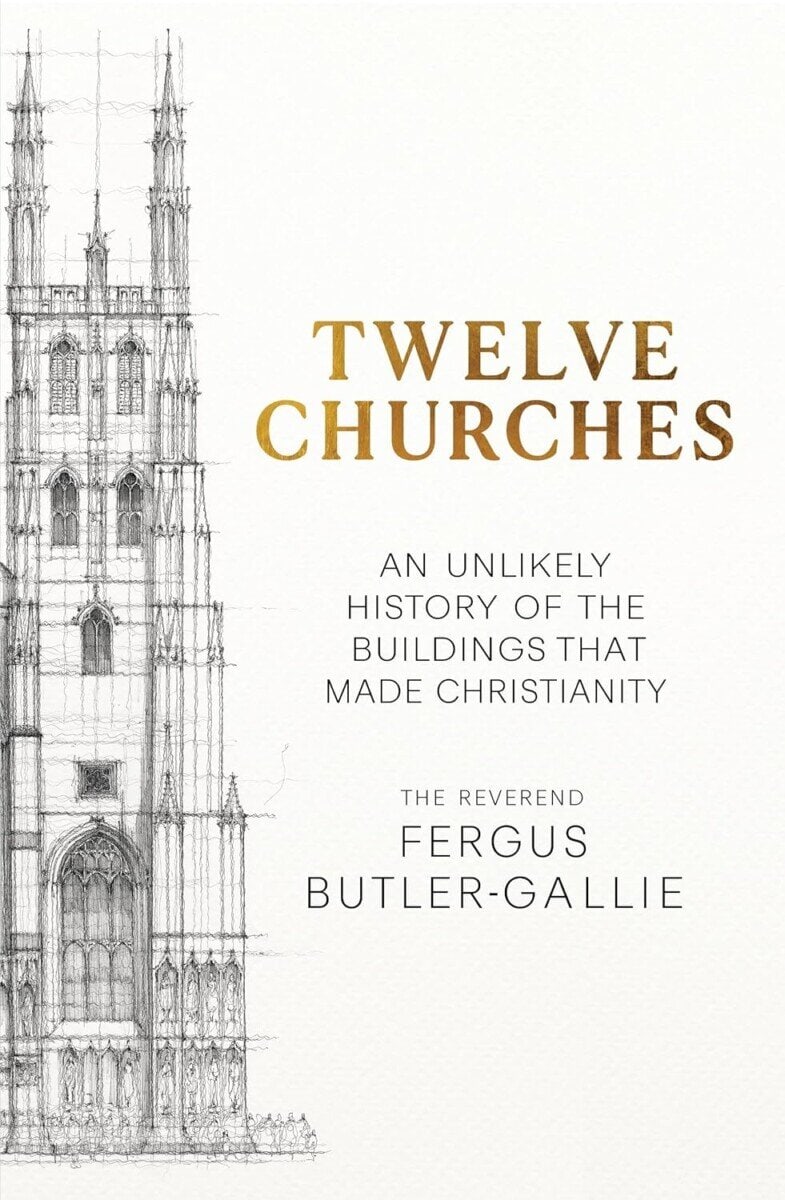OHCT Trustee, Nicola Coldstream recommends this racily written, fast-paced and thought-provoking book, which would make an ideal Christmas present !
Members of the Trust who came to hear Fergus Butler-Gallie’s Wolfson Lecture last July will be looking forward to this book, since his lively, stimulating lecture was an introduction to it. However, although the lecture was illustrated with slides for each of the twelve churches, the book is only indirectly about the churches’ appearance: each building is illustrated only by a line drawing at the beginning of its chapter. Architectural significance does come into it as part of what is a prolonged meditation on the way the chosen buildings contributed to the history and meaning of Christianity, standing for the way Christianity has adapted itself through time. We are given the history of each church from its foundation to the present day, very important for the early buildings like the Church of the Nativity in Bethlehem or Haghia Sophia in Istanbul, since they have such long and complex histories, while the more recent ones, especially Canaanland, Ota, Nigeria, which closes the book, have hardly any history in the chronological sense at all. But these histories are interwoven with the impact the buildings have made through the ages, their changing meaning and, for Haghia Sophia, which has gone from church to mosque to museum and back to mosque, their changing identity.
Butler-Gallie confronts head on the paradoxes of Christianity down the centuries: of a religion that preaches peace but has involved itself in violence; that preaches that all people are of equal moral value but resists gay marriage. But his argument – heavily over-simplified here – is that Christianity survives and flourishes around the world precisely because God became man in all humanity’s messiness (his word), and that messiness includes evil alongside the good. As he explores all the ways in which two millennia of Christians have interpreted Christianity through their sacred buildings, he shows how it permeates every aspect of life, personal and political, and the early chapters in particular present the paradox of the search for beauty in the service of God and the violence in that same service. The buildings he chose to symbolise Christianity’s transcendence are all fascinating in their different ways, and vividly described.
The book is racily written, fast-paced and thought-provoking. If Butler-Gallie’s sermons are like it, his parishioners in Charlbury and Shorthampton are lucky. At times the text reads as if produced in haste: the odd meaningless sentence that might have been helped by a few commas, and someone should have spotted misspellings and typos. It is, however, a thoroughly worthwhile counterblast to much contemporary criticism, written in faith and deep conviction. Make sure it is on your Christmas list !
Twelve Churches. An Unlikely History of the Buildings That Made Christianity, Fergus Butler-Gallie, Hodder and Stroughton (London), 2025, 496 pages, Hardback £30, ISBN 10 1399731300, ISBN 13 9781399731300

